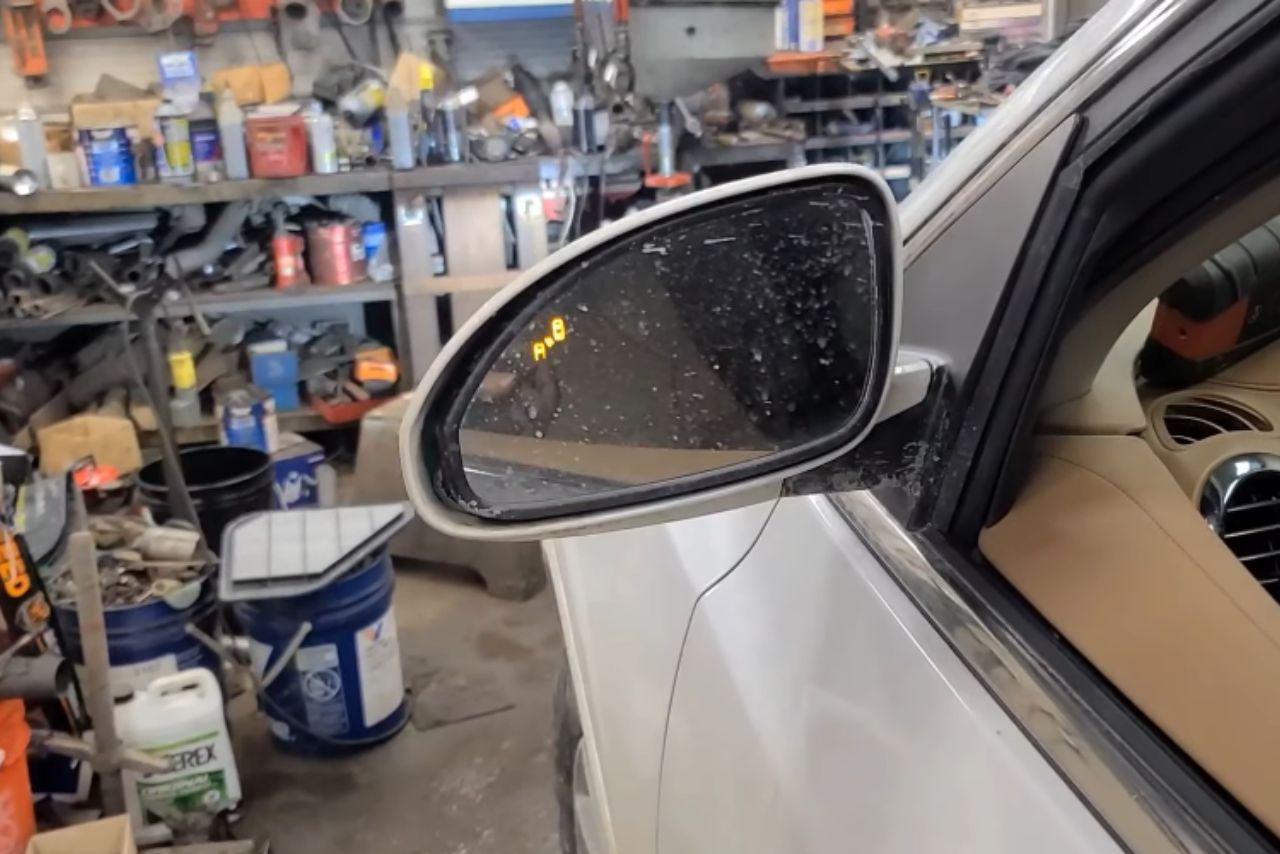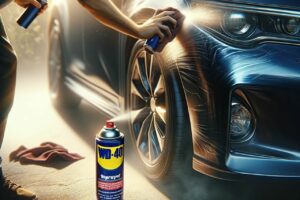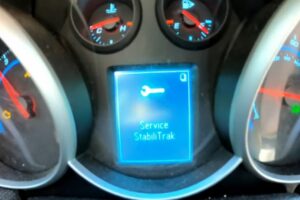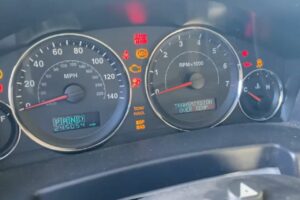When you see the term “Service Side Detection System,” it’s easy to feel a bit puzzled. But, not to worry! This system is essentially your vehicle’s safety feature that alerts you when there’s another car in your blind spot.
If something goes wrong with this system, it could be due to various reasons like faulty sensors or software glitches. As for fixing these issues? It largely depends on what exactly caused the problem in the first place.
Service Side Detection System 100% Solution:
Water in rear sensors triggers service side detection errors. Replace with Genuine GM Part 84440527 for plug-and-play ease, avoiding dealer programming costs. Access sensors behind the rear tire, use dielectric grease, and inspect the connector for pin corrosion. This ensures a reliable fix for optimal system performance.
In below you can see how one of our reader have fixed his Service Side Detection System issue using our method:

If you guys have any issue, you can comment down below.
Table of Contents
What is a Service Side Detection System?

A Service Side Detection System (SSDS) is a crucial part of modern vehicles. It’s designed to enhance safety and assist drivers in various situations. Let’s dig into what it means, its purpose, and how it works.
Let’s check out some key components of this system:
| Component | Function |
|---|---|
| Radar Sensors | Detect nearby vehicles or obstacles |
| Control Module | Analyze data from sensors & activates alerts |
Notice that:
- The radar sensor detects other cars when changing lanes.
- Information is passed onto the control module for analysis.
- Depending upon the situation, an alert triggers if there’s potential danger.
Bear in mind – SSDS doesn’t replace driver judgement but serves as an extra layer of protection while driving!
Why is Service Side Detection Important?
Service Side Detection is a crucial feature in modern vehicles. It’s not just about convenience—it’s about safety, too. Here are some reasons why it matters:
It’s important for drivers to understand the role this system plays in maintaining vehicle safety on the road.
| Benefit | Description |
|---|---|
| Collision Prevention | Alerts drivers when an object or another vehicle is detected within close proximity |
| Enhanced Visibility | Reveals ‘blind spots’ that might otherwise be missed |
| Improved Driving Experience | Provides timely feedback allowing the driver more control over their driving decisions |
- Collision prevention provides peace of mind while driving
- Blind Spot detection helps avoid unseen hazards
- Timely feedback can make all the difference in critical situations
Failure in service side detection may lead to impaired judgement calls due to lack of information, resulting in potential mishaps or even accidents.
Common Causes of Service Side Detection Issues:
Several factors can lead to problems with your service side detection system. Understanding these causes is the first step towards troubleshooting and fixing them.
Here’s a simple table summarizing these points:
| Cause | Description |
|---|---|
| Faulty Sensors | Defective sensors may not perform optimally |
| Physical Obstructions | External elements like dirt or snow interfering with sensor functions |
| Electrical Problems | Issues within the vehicle’s electrical circuits affecting operations |
Below are three common causes explained in detail:
Understanding each cause plays an integral role when seeking solutions for service side detections issues!
Understanding Error Messages and Codes:
When you encounter an issue with the Service Side Detection System, your vehicle will display specific error messages and codes. Let’s break down some of the common ones:
P0690: Engine control relay feedback circuit high voltage.
- Your car’s computer controls many systems, including the service side detection system. If there’s a malfunction in this circuitry, it might cause high voltage levels resulting in this error code.
C0710: Steering angle sensor not initialized.
- This indicates that the steering wheel isn’t sending correct signals to other parts of the vehicle like Stability Control or Traction Control System. It can also impact your side detection system causing it to generate errors.
B1271: Decklid punch-out sensor open circuit.
- An open circuit means there is no continuity or flow of electricity which could be due to broken wires or disconnected connectors within your decklid punch-out sensor, thereby leading to this fault code.
Here is a quick rundown on how these error codes are structured:
| Code Type | Meaning |
|---|---|
| First Character (Letter) | Describes what system has caused the problem: ‘P’ for Powertrain (Engine & Transmission), ‘B’ for Body (includes A/C & Airbags), ‘C’ for Chassis (Steering & Brakes). |
| Second Character (Number) | Tells whether code is generic (‘0’) applicable across all vehicles or manufacturer-specific (‘1’). |
| Third Character (Number) | Pinpoints exact subsystem where fault lies e.g., emission management (‘3’), ignition system (‘4’). |
Knowing how to understand these error codes will help diagnose issues quicker and more accurately when they arise with your Service Side Detection System.
How to Troubleshoot Service Side Detection Problems?
When faced with service side detection issues, it’s important to know how to troubleshoot effectively. Here are some steps you can follow:
If these initial checks don’t resolve your issue, delve deeper using a professional scan tool:
- Run Diagnostic Scan:
- Interpret Trouble Codes:
| Code | Meaning |
|---|---|
| U0232 | Lost Communication With Image Processing Sensor ‘A’ |
| C1747 | Left Side Camera Signal Circuit Open |
Use this table as a starting point but refer to your vehicle-specific manual for comprehensive code definitions.
After interpreting the trouble codes, perform necessary repairs:
- Replace Damaged Components: If sensors or cameras are damaged, replace them.
- Repair Wiring Issues: Fix any broken or frayed wires found during inspection.
- Clear Trouble Codes: After making repairs, clear all stored codes and verify if they return after driving.
Remember that this guide is just a starting point in troubleshooting service side detection problems; always consult your vehicle’s manufacturer guidelines for specific instructions pertaining to your model of car!
Step-by-Step Guide to Fixing Service Side Detection Issues:
To resolve Service Side Detection issues:

| Step | Action |
|---|---|
| 1 | Lay behind the rear tire to access the sensors. |
| 2 | Identify water damage and replace sensors with Genuine GM Part 84440527. |
| 3 | Apply dielectric grease to the connector for proper sealing. |
| 4 | Inspect and replace the harness if pins are corroded. |
| 5 | Ensure a plug-and-play fix, eliminating the need for dealer programming. |
| 6 | Enjoy optimal system performance with resolved Service Side Detection issues. |
Remember: Safety first! Always perform these checks in safe conditions and don’t attempt DIY fixes if uncomfortable with auto repairs.
You ca watch this video to fix this issue:
Preventive Measures for Maintaining a Reliable Service Side Detection System:
To keep your service side detection system performing optimally, consider the following preventive measures:
Here is a simple table to guide your maintenance schedule:
| Activity | Frequency |
|---|---|
| Regular inspection | Every month |
| Cleaning sensor lens | After every car wash |
| Checking for physical damage | After driving in rough terrains |
Following these steps will not only ensure that your service side detection system remains reliable but also extend its lifespan significantly.
Best Practices for Optimizing Performance of the Service Side Detection System:
When it comes to optimizing the performance of your service side detection system, several best practices can be followed:
- High-Performance Processor
- Efficient Power Supply Unit
- Robust Motherboard
Here’s a quick three-step process to enhance your SSDS performance:
- Assess: Analyze current system status.
- Plan: Formulate an optimization plan based on assessment results.
- Implement: Execute the plan while monitoring changes in performance levels.
Remember, maintaining optimal SSDS performance will often require both proactive (predictive) and reactive (corrective) measures!
Frequently Asked Questions about Service Side Detection Systems
What is a service side detection system?
A service side detection system is an advanced safety feature in vehicles that monitors the blind spots on either side of your car.
What are common causes of failure?
Dirt or debris covering the sensors
Damage to sensors due to minor accidents
Electrical issues like blown fuses
Software updates needed
Can I fix these problems myself?
In some cases yes! For instance: Clean sensors if covered by dirt/debris.
Check for any visible damage and replace parts as needed.
However, complex electrical issues or software updates typically require professional servicing.
How does a service side detection system work?
The system uses radar sensors to detect other vehicles or obstacles in your vehicle’s blind spots and alerts you with visual and audible warnings.
| Question | Answer |
|---|---|
| 3. Why would I need this feature? | This helps prevent collisions when changing lanes or reversing. |
| 4. Is it possible for the system to fail? | Yes, issues can arise from sensor obstruction, electrical problems, or software glitches. |
Remember: Regular maintenance checks help ensure longevity of your service side detection systems!
Resources and Additional Information
For an in-depth understanding of the Service Side Detection System, take advantage of these resources:
Conclusion and final thoughts
Addressing Service Side Detection issues involves a systematic approach for effective resolution.
By carefully inspecting and replacing sensors, applying dielectric grease, and ensuring proper connector maintenance, users can achieve a plug-and-play fix with Genuine GM Part 84440527.
This comprehensive guide not only simplifies the process but also eliminates the need for costly dealer programming, resulting in restored and optimized system performance.
Latest Posts:
- Can WD-40 Remove Scratches on Cars? (Hint: Yes, but…)
- Can You Use a Drill to Polish Your Car? (We Tried it Out!)
- Should You Cover Car Scratches With Stickers? (REVEALED!)
- Buick Service Stabilitrak: (Causes & 100% Guaranteed Fix!)
- Common Holden Trax Problems (Causes & 100% Proven Fixes!)
- Jeep Commander Transmission Over Temp: (Guaranteed Fix!)











Leave a Reply